Switch to Adaptic
Adaptic chair
Adaptic therapeutic chairs allow natural mobility of the spine and support healthy posture. Our chairs enable activation of the deep core stability muscles of the spine (DCSM), which is essential for a healthy posture of the back. The proper use of these muscles prevents the development of chronic musculoskeletal conditions and relieves back pain. Adaptic means comfortable and healthy seated posture throughout the day.
Exercise ball
Physicians recommend exercise balls for rehabilitation of back pain because they enable active use of the muscles surrounding the spine. However, there is no relaxed sitting position on an exercise ball. Unlike an Adaptic chair, an exercise ball should not be your office seat throughout the day, as it lacks a backrest and requires constant effort to remain balanced. In fact, exercise balls should not be used for more than 30 minutes a day.
Office chair
Static chair seats may cause muscle dysfunction (hunched back) and imbalance (overload) in the L5/S1 lumbar area and the thoracic spine. This eventually leads to painful chronic conditions, which may develop complications that require surgery. Therefore, standard or even ergonomic office chairs are inadequate for daily, long-term use, such as in office work.
Adaptic for a healthy back
-
Relieves lumbar pain
Adaptic tilting seats adjust to the movements of your lumbar and pelvic areas, enabling various musculoskeletal functions: The spine maintains an S-shape, which is optimal for the wedge-like profile of the vertebrae. This relieves the stress on vertebrae and spinal discs, a common cause of lumbar pain. A variety of back muscles take the load off the spine itself, preventing its overstressing. When tilting forward, the lumbar load is also reduced. On a standard office chair, bending forward over the desk means bending from the waist, which places undue stress – up to 200 kg specific pressure – on the L5 through S1 vertebrae, which is likely to cause lumbar pain. Adaptic chair seats dynamically tilt forward, which allows the lumbar muscles to slide under the spine and reduce the pressure by more than half. Together, these features help reduce pain in the lumbar and surrounding areas.
-
Releases stiff neck
The leading causes of cervical spinal pain are static overload and muscle imbalance. This can happen after several hours sitting on a static-seat office chair, where the spinal erector muscles become fatigued and posture deteriorates to a hunchbacked state with the head jutting forward. This leads to overloading of the cervical spine, causing sudden-onset pain. Poor posture may result not only from standard office chairs, but some ergonomic chairs as well. Persistent dull ache in the neck with shooting pains in the shoulders or shoulder blades, as well as reduced mobility of the cervical spine, are common symptoms of vertebrogenic pain syndrome, which may lead to long-term deterioration of head posture. Long-term sitting on office chairs can thus have fairly serious adverse effects.
With the Adaptic tilting seat, the spine bends naturally into an S-shape, distributing load effectively along its entire length, with shoulders back and head straight. This reduces the strain on trapezoid muscles and relieves cervical spine overloading. This posture does not cause musculoskeletal blocking or a stiff neck, as the cervical spine is not under excessive strain.
-
Strengthens deep core stability muscles
At the core of the torso lie the deep core stability muscles of the spine (DCSM), a group of muscles which support the spine in its load-bearing function. DSCM muscles are found deep within the torso, underneath the surface back muscles. Due to their position, these muscles cannot be exercised easily, but Adaptic chairs can help here as well. The stability of the spine depends to a considerable extent on the paravertebral muscles. These consist of a surface muscle group, which is palpable under the skin around the spine and can be exercised through physical activity, and a deep muscle group, which is key in stabilizing the spine but can generally only be exercised in certain postures. Adaptic tilting seats enable such postures, allowing the activation of a cascade of musculoskeletal functions, including the use of deep spinal muscles, surface muscles of the back and deep forward cervical flexors (neck muscles), and further interactions between the diaphragm, abdominal muscles, and pelvic muscles.
Another way to visualize the DSCM is this: The lower lumbar area is a kind of Achilles heel of the body and a site of frequent acute or chronic pain. This is because the lumbar spine bears the weight of the torso (and head) in most situations. Although the vertebrae and discs in this area are the most robust, they are not enough to support the torso. The function of the DSCM, then, is to transfer the loading forces between the upper and lower parts of the body, functioning similarly to a piston system. Imagine the abdominal area as a cylinder or cushion with an upper and lower piston. The “walls” of the cylinder would be the flat abdominal and lumbar muscles and the anterior face of the lumbar spine. The bottom “piston”, which is the less mobile one, consists of the pelvic muscles, the inside of the pelvis, and the bottom-most section of the abdomen. The more mobile upper piston is the diaphragm, which is used in breathing. This postural mechanism can transfer loads from the chest area directly to the pelvis, bypassing the lumbar spine. Assuming the muscles forming the “piston” are in good condition, they can share the load that would otherwise be borne almost entirely by the spine. This abdominal piston becomes more important when bending forward, particularly when combined with rotation of the torso. If the participating muscles are weak, undue pressure on the spine may result, leading to a variety of painful conditions.
The proper use of the deep core stability muscles of the spine (DCSM) is necessary to prevent overloading the spine. Adaptic therapeutic chairs have spring-mounted tilting seats which help strengthen these crucial muscles. The static seats of common office chairs and most other ergonomic chairs only allow use of some muscles to maintain posture, which leads to their overloading. This can cause sudden-onset acute or chronic pain.
-
Strengthens back and abdominal muscles
Adaptic therapeutic chairs allow activation of the deep core stability muscles of the spine (DCSM – see previous item), as well as muscles of the back and abdomen. The use of all appropriate muscles allows maintaining optimal posture for static load. With these muscles active, the spine curves naturally and the individual vertebrae and discs are evenly loaded.
Such optimal posture is only possible with many muscles working together. Using only a series of long muscles would eventually lead to deformation of the spinal segments. To properly stabilize the spine, short deep muscles must work in concert with long surface muscles. These muscles include the deep muscles of the back, the diaphragm, and pelvic and abdominal muscles. Together, these muscle groups support the abdominal cavity and help maintain optimal abdominal pressure.
Dysfunction of the DCSM is among the leading causes of back pain. Spinal segments (vertebrae) lack adequate support or are supported in sub-optimal positions, leading to chronic overloading and inadequate muscle support of the spine during movement, under static load, and against external forces. Muscles in a particular region of the body generally work together as a group, and dysfunction in one of them usually makes the entire muscle group dysfunctional. Proper function of the muscles of the back and abdomen is thus essential for posture. Adaptic chairs feature tilting seats, which allow activation and exercise of back and abdominal muscles, supporting healthy posture and protecting the spine.
-
Balances spinal disc load
-
Prevents scoliosis
Scoliosis is a sideways deformation of the spine consisting of rotation of the vertebrae or their shifting to the side. The result is an unphysiological spinal curvature preventing the attainment of proper posture, commonly leading to pain primarily in the lumbar area and neck. In severe scoliosis, pain tends to manifest mainly when sitting or walking. Various muscles become overstrained and painful symptoms may increase over time. Scoliosis has two basic stages – functional and structural. In functional scoliosis, the spinal deformation is not yet permanent and can be rectified with physical therapy. Eventually, functional scoliosis will become structural as vertebrae deform and rotate. One way to prevent aggravation of scoliotic features of the spine is to improve the muscle support of the torso, such as with active sitting on an Adaptic therapeutic chair. The tilting spring-mounted seat of an Adaptic chair allows for both spiral and vertical stabilization and strengthens back and abdominal muscles, helping prevent scoliosis or reduce the severity of certain existing cases.
-
Improves posture
-
Straightens hunched back
Long-term sitting with hunched back (effectively all standard and ergonomic office chairs) increases the stress on spinal discs, as the weight of the torso is not symmetrically distributed. The anterior (front) part of the disc is under more pressure than the posterior (back) part, eventually tending to compress the disc into a wedge shape and overload the ligaments that help stabilize the disc. The core of the disc tends to shift position, which may cause pressure on nearby nerves. Sitting on office chairs which only allow a hunched posture thus may lead to damage to spinal discs. Adaptic chairs feature spring-mounted seats that can tilt axially (forward and back) and laterally (to the sides) to adapt to the movement of the pelvis. This allows the spine to assume its natural S-shape, which is optimal for a sitting posture and reduces stress on spinal discs. Adaptic therapeutic chairs help activate the supporting muscles of the spine, stabilizing the spinal column and allowing it to maintain its natural shape.
-
Improves blood flow to the legs
-
Reduces pressure on stomach and lungs
- For all-day use
- Comfortable and flexible
- Unique pelvic mobility
- Allows natural movement
- Adapts to your body
Products
-
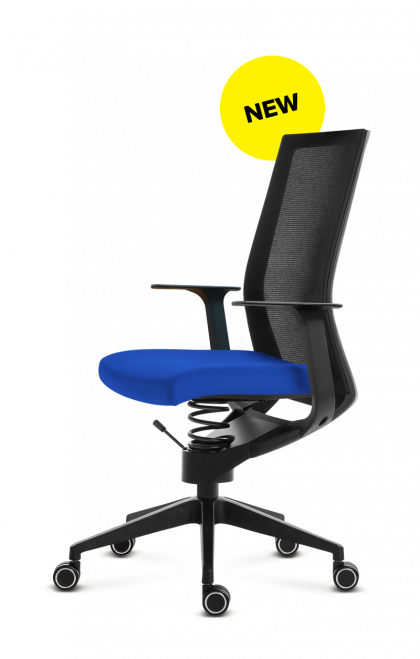
Adaptic EASY
from CZK 14,490
- versatile, fits most builds
- highly popular model
- new in 2022
-
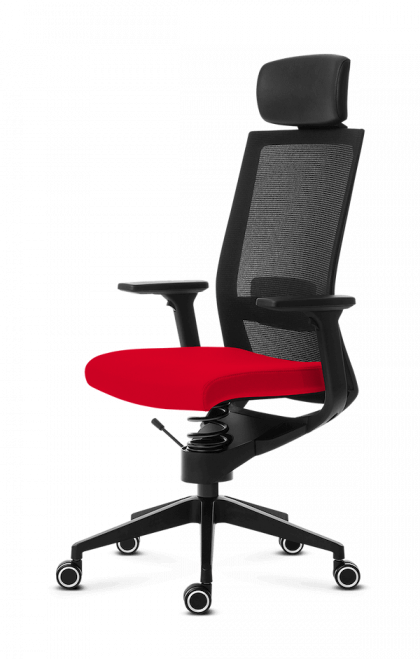
Adaptic EVORA
from CZK 15,990
- versatile, fits most builds
- best-selling model 2020-21
-
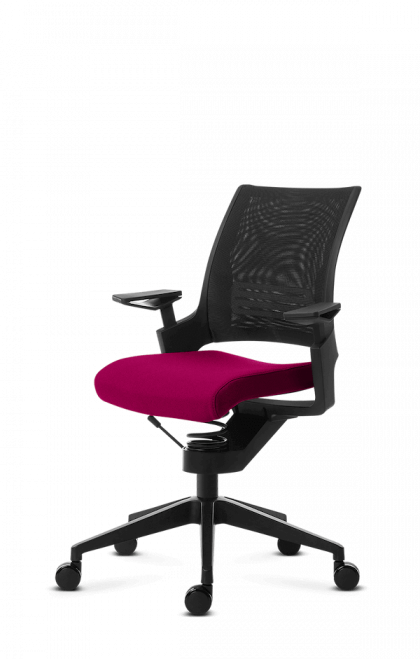
Adaptic MIO
CZK 12,490
- slim and medium build
- office and home office use
-
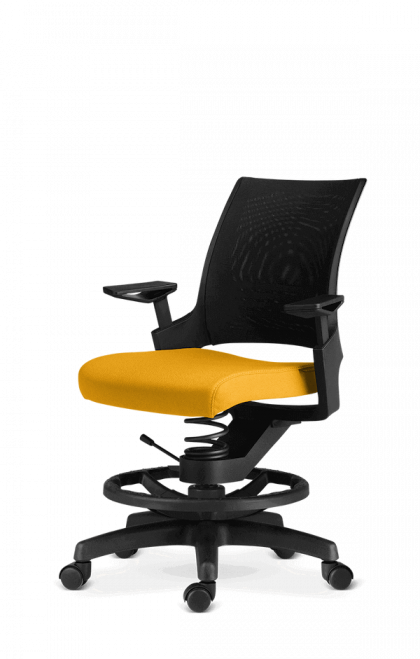
MIO KIDS - Kids' Health Chair
CZK 12,490
- for kids aged 6 and older
- supports spine development
-
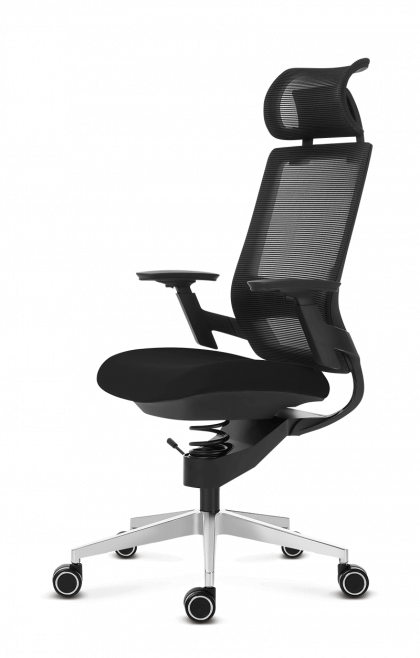
Adaptic COMFORT
from CZK 19,990
- medium and large build
- very comfortable
-
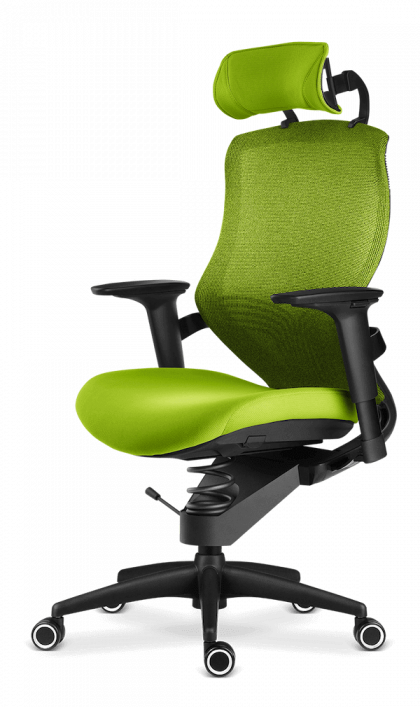
Adaptic XTREME
from CZK 19,990
- slim, medium and large build
- extreme sensation, great flexibility
-
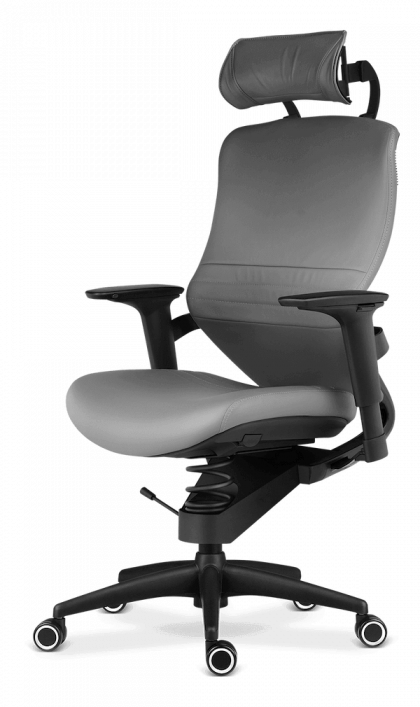
Adaptic STYLE
from CZK 21,990
- slim, medium and large build
- leather-mimicking microfiber
-
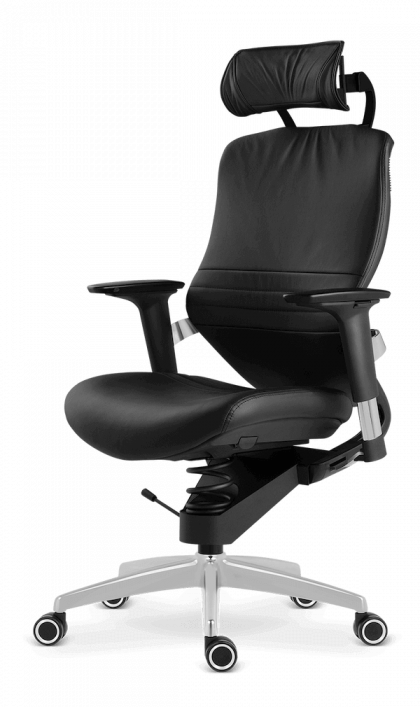
Adaptic DESIRE
from CZK 24,990
- slim, medium and large build
- elegant in genuine leather





